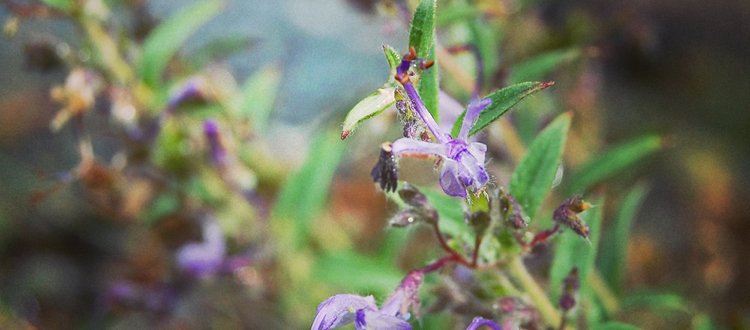Scientific name: Trichostema lanceolatum
Common names: Vinegarweed, Blue-curls, Camphor weed, Romero, Yerba del aigre, Stink weed, Turpentine weed, Wild rosemary
Family: Lamiaceae (Mint family)
While walking through open grassy woodlands and prairies during late summer, you may have encountered a strong smell of minty vinegar on the breeze, and maybe even heard the hum of insects that eagerly congregate on the annual herb commonly known as Vinegarweed. The attractive purple flowers are an important late summer pollen source for many insects, with flowers known to bloom into October.
This sun-loving herb is quite shade intolerant, and prefers dry soils below 2,200 ft between Washington and Baja California. It is known to have phytotoxic properties that prevent other plants from growing happily around it. This could make it an excellent plant for competing with invasive herbs. It is also unlikely to be palatable to browsing animals due to its highly fragrant oils. Seeds mature and can be collected in late fall, and sown directly (raked into soil) in fall or early spring.
Vinegarweed is known to be highly medicinal, and has been used by west coast tribes for many healing purposes, including for treatment of colds, throat inflammation, headaches, infected sores and aching teeth.
The species name Lanceolatum means “lance-shaped”, which relates to the shape of Vinegarweed’s leaves. It’s always nice when the scientific name relates to the plant’s appearance! Its lovely little purple flowers are also a great way to identify the plant, but the easiest way to identify Vinegarweed by far is its powerful fragrance – you can’t miss it!
USDA Plant Guide: https://plants.usda.gov/plantguide/pdf/cs_trla4.pdf

